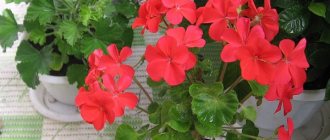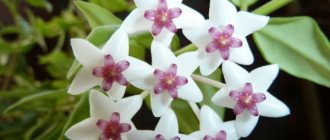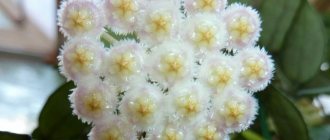Description of the Miss America peony
Miss America is a herbaceous peony. The hybrid grows quite quickly, single buds appear in the second year of life. It can remain in one place for 6 years, then it is necessary to rejuvenate the bush by dividing the rhizome.
Miss America is an early flowering culture, buds bloom alternately from mid-May to June
The duration of the cycle is 20 days. The flower lives for 5–6 days, then withers. After wilting, the flower stalks are cut off, and the plant, thanks to its openwork dense crown, remains decorative until autumn.
Description of the Miss America variety:
- The bush is dense, spreading, diameter – 60 cm, height – 75–85 cm;
- The stems are erect, hard-fibered, the surface is smooth, light brown.
- On the central shoot, 2–4 lateral peduncles are formed in the upper part. During the flowering period, the bush disintegrates, the stems droop quite low during rains.
- The leaf blades are attached to long petioles, 4–6 pieces each. The leaves are arranged alternately, the internodes are short, so the peony is quite densely leafy. The plates are lanceolate, green, glossy.
- The flowers are large, up to 25 cm in diameter, semi-double. The buds have a slight pink tint and turn white after blooming. The petals are rounded with smooth or feathery edges. The central part is open, consists of numerous stamens with bright lemon anthers.
- The aroma is weak or completely absent.
During flowering, Miss America does not hold its shape well; a garter to a fixing structure is recommended
Reproduction methods
The Miss America herbaceous peony is most often propagated by dividing the rhizomes. This is the most effective way to get a new, healthy and strong plant. Experienced gardeners also root cuttings cut from stems in the summer, or propagate by divisions from spring shoots. The method of dropping layering from formed stems is also used.
The easiest way is to divide the mother bush of adult peonies in the fall, at least 5-6 years old. Such seedlings take root well and begin to bloom profusely in the second or third year.
Flower buds form on the rhizome in early August. At the end of September, thick white roots are fully formed, in which the plants store nutrients. In the interval between these important processes for the peony, it is easiest to divide the rhizomes and select new planting material.
Application in design
The variety is universal in use. The Miss America peony (pictured) is quite suitable for cutting. Peony is used in classic design plantings:
- create white gardens;
- included in mixborders, rock gardens;
- form borders and natural hedges;
- decorate lawns, ridges, flower beds, grow peonaria with a variety of flower colors;
- decorate recreation areas.
Peony harmonizes in the composition next to flowering and ornamental plants: hostas, roses, hydrangeas, irises, daffodils, dwarf thujas, spruces, and pines.
Important! The ground cover juniper will be an undesirable neighbor for the peony. Crops require different soil compositions, and ephedra often causes rust at Miss America.
Do not place next to aggressor plants:
- ground cover loosestrife;
- milkweed;
- ferns;
- bulbous ryegrass.
These species have a creeping root system. The crops grow quickly and displace the peony from the site.
History of origin
Already from the name of the culture it becomes clear that this perennial was bred in the USA. It is the fruit of the hard work of two breeders: Mann John R. and van Steen Julius J. The variety appeared quite a long time ago - in 1936. Despite its American origin, it is represented on the flower market by Holland, in particular by the Greenworks company. Miss America is a gold medal winner from the American Peony Society (APS). The noble culture received this award twice: in 1956 and 15 years later - for abundant flowering and unsurpassed beauty.
Planting and care
Miss America is a light-loving plant. For the peony, a place is allocated in an area without shade and away from tall trees. It is also not recommended to plant the plant close to the wall of a building, especially a brick or stone one. Choose a well-drained area with light fertile soil.
Important! The composition of the soil should be neutral or slightly alkaline. Peony will not bloom on acidic soil.
Planting work can be carried out in spring or autumn (a month before frost). It is better to place seedlings and cuttings in the ground in the spring; they with weak roots may not survive the winter. It is best to divide the rhizomes of the Miss America variety in the fall. The root is removed from the soil, divided into parts, placed in peat and lowered into the basement.
In the spring, when the buds begin to grow, the Miss America peony is planted in open ground.
If the transplant is carried out immediately after digging, then the root is washed with water, allowed to dry, and divided into parts. To get a strong plant, one fragment must consist of 4 or more shoots, an intact neck and at least three buds.
A Miss America peony purchased from a nursery should look healthy, without signs of mold or mechanical damage. It is placed on the site along with soil from the container.
Miss America landing:
- A hole measuring 50*50 is dug two weeks before work. The bottom is covered with a drainage cushion and a fertile substrate consisting of a turf layer and compost, leaving 20 cm to the edge of the recess.
- The hole is filled with water so that the soil settles.
- Before planting the peony, prepare a fertile soil mixture and add complex mineral fertilizer to it.
- A lath is placed on the edges of the hole, the buds are deepened by 4–5 cm, the peony root is fixed to the lath and covered with substrate.
- Compact, water, cover the surface with ash.
Attention! If Miss America was planted at the end of the season, then the ground must be mulched.
How to care?
Peonies are very unpretentious plants to care for. All you need to do is follow the basic steps:
- weeding;
- loosening the soil;
- pruning;
- watering;
- fertilizer.
This set of rules is basic for all peonies, and if you adhere to it, the plant will grow beautiful and healthy.
Top dressing
The key to success in growing this peony variety is properly selected soil. In such conditions, the first few years the plants do not require feeding at all. After 1–2 years, the plantings need to be fertilized three times.
In the middle of the summer season, flowers can be fertilized using bird droppings. The plant is also often fertilized with mullein. Three liters will be enough for one peony bush.
With the onset of autumn, it is necessary to carry out the fertilizing process again. All that is needed is water and superphosphate. The water should be stagnant. A spoonful of mineral fertilizer will be enough for one bucket. One plant requires the same amount.
In the spring, the fertilization process consists of mulching the soil around the bushes. Any mulch is suitable for this, and wood ash can be an additional component.
Watering
Peony does not need excessive moisture. Even during a period of rapid growth and development, it will be enough to water once a week. This also applies to the flowering period. After which the flowers can be moistened even less frequently. But watering should be plentiful. One bush requires 3 buckets of water per watering. The evening time of day is ideal for carrying out this process. After each watering, it is recommended to loosen the soil near the bushes.
Features of cultivation
Caring for Miss America is standard and no different from agricultural practices for other varieties. Without fertilizer it is impossible to grow a lush, profusely blooming peony. To increase green mass, nitrogen-containing products and organic matter are introduced in mid-April. When buds begin to form, the peony is fed with phosphorus and potassium supplements. During flowering, fertilize with superphosphate. The last feeding for the Miss America variety is applied to lay the vegetative buds in October, when the peony enters the dormant phase.
If the root circle is mulched in the spring, the need for loosening is minimized. The soil is not compacted and optimal moisture is maintained. Weeds are removed by hand by the roots as they appear. Peony is watered in the spring, before the buds open, and in the fall. Seasonal rainfall is sufficient for the crop. During drought, 10 liters of water are poured under each bush (interval 8–12 days).
Protection from diseases and pests
The hybrid variety Miss America gets sick very rarely. The spread of viruses and fungi can be caused by an incorrectly chosen planting site or waterlogged soil. The main diseases of peony are powdery mildew and rust. If a problem is detected, the bush is treated with Fitosporin or any antifungal drug. To prevent infection, preventive treatment with Bordeaux mixture is carried out before budding.
Miss America peonies are parasitized by the bronze beetle and aphids; the pests are eliminated with Kinmiks
In a wet area, the root can be attacked by a nematode. There are no effective drugs against the parasite. The bush is dug up, the root system is examined, problem areas are removed and moved to another place. In 30% of cases, the peony can be saved, but more often the plant dies.
Preparing for winter
Without shelter, the adult Miss America peony tolerates temperatures as low as -40 0C. Plants planted in autumn or spring are covered with a layer of mulching material and covered with snow for the winter. Preparatory activities are as follows:
- After the above-ground part dies, the peony is cut back to the vegetative buds.
- Carry out abundant water-recharging irrigation.
- They are fed with organic matter, superphosphate and potassium supplements.
- The bush is being spudded.
- In the south, work ends here; in temperate climates, they are covered with mulch.
If at the beginning of the season the root circle was covered with mulching material, it is replaced in the fall to prevent the proliferation of pests.
Reviews
Maria Kurdyumova, 47, Novosibirsk Creating a peony garden on a personal plot has always been a dream, but not all varieties are suitable for our climate. Many peonies could not survive the winter; he thoroughly dealt with this problem. The dream has come true, Miss America tolerates our winters well, and planted the variety along with pink and burgundy varieties. The white variety gives the flowerbed a solemn and orderly appearance; without it, the composition would seem unfinished. Tatyana Kitichenko, 52 years old, Krasnodar region The Miss America peony was planted in the central part of the rock garden. The variety is resistant to drought, the petals do not burn in the sun during flowering, and the peony tolerates the long rains inherent in our climate. I have 3 bushes that have been growing for more than 5 years, during which time the plants have never gotten sick, and I have not noticed any pests on them. For full flowering, timely feeding is required.
Source – https://agrognom.ru/flowers/peony/pion-miss-amerika-opisanie-foto-otzyvy.html
Stratification
In this case, stratification is also necessary.
A few secrets of germinating peonies
Warm period
The soaked seeds are planted in damp sand poured into a wide bowl and placed on a warm surface. The first days maintain high humidity so that the seeds swell. It’s easy to check if there is enough water: if you squeeze the mixture, drops appear.
Warm stratification of peony seeds
A heating pad or battery is suitable for this during the heating season. For 6 hours, the sand is heated to 30 °C, then kept at 18 °C for 4 hours. The process is repeated many times, moistening the soil in the bowl as needed. The duration of the “warm” period is 60 days. At the end of the period, the seeds take root.
Cold period
The sprouted seeds are carefully removed from the container and the root tip is pinched. Prepare a mixture for planting - mix peat and river sand in equal parts
The seeds are sown in a container and sprinkled with soil in a layer of 5 mm, no more.
Sprouted peony seeds
Material content conditions:
- tо - +5...+10 оС;
- humidity - up to 10%.
In such an environment, the seeds remain until the first leaves appear.
Characteristics
- A healthy Miss Piggy seedling is capable of blooming within the year of planting;
- In terms of winter hardiness, our heroine is suitable for growing in central Russia. It tolerates winters well with temperatures of -23°C, which corresponds to USDA zone 6. Frozen bushes recover well;
- The culture is moderately resistant to major diseases. In favorable years, resistance is high, but in epiphytic years the variety can suffer from black spot and powdery mildew. Some rose growers note that the plant can also suffer from rust;
- Average resistance to rain is declared; only individual flowers can be damaged. But according to the observations of flower growers, our heroine tolerates a short rainy period very well. As a keepsake from the precipitation, only small spots on the petals remain;
- The plant tolerates the hot period well, the petals do not crumble, the edges do not melt or dry out;
- The variety is often grown as a cut variety. The long stem, devoid of thorns and crowned with a delicately colored rose, looks very decorative. In a vase, Miss Piggy can retain freshness and aroma for about 2 weeks.
Peony Ann Cousins (Paeonia Ann Cousins) - what kind of variety
“Florists of Moscow” awarded the Ann Cousins peony a prize in the category “White milky-flowering varieties.” This is an intraspecific variety. The originator Gilbert H. Wild & Son brought it out in 1946. Since then, this herbaceous plant of the Peony family has delighted gardeners with its milky cream color.
Peony Anne Cousins
This is interesting! The scientific name of the genus immortalizes the name of the ancient Greek god Paean. According to myth, he treated the Olympian gods and saved Hades himself from death when Hercules wounded him. At some point, Paean fell out of favor with the god of healing Asclepius, who wanted to poison him. But Hades turned his savior into a flower like a rose. The wonderful legend matches the charm of the garden plant.
The flower has been domesticated for so long that it can no longer be found in the wild. Southeast Asia is considered the birthplace of the peony. It grows in the southern, middle and northern latitudes of all continents.











